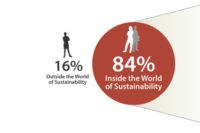Sugar
Sweetener Wars: How do Americans really feel about sugar?
Why do they tend to avoid it and how can companies combat negative perceptions?

Sugar and sweetened products play a complex role in American culture and diet: For generations, sugar has been an integral part of personal and social occasions centering on indulgence, celebration, and reward, with patterns established early in life at home (e.g., making cookies with Mom) and socially (e.g., raising money with school bake sales).
Starting in the 1970s, however, a rising sentiment portraying sugar as a “demon” gained momentum, culminating with the rise in popularity of the Atkins and South Beach Diets, both of which “taught” consumers to avoid refined white sugar and high fructose corn syrup.
Today, it is not uncommon for the media to be on a sugar high with stories focused on the dozens of pounds of sugar that Americans consume on an annual basis. And, while few studies have definitively linked sugar to obesity, many diverse stakeholders ranging from federal agencies to health authorities to public interest groups agree that changes in lifestyle that include high consumption of sweetened foods and beverages have contributed to what is broadly considered an epidemic of overweight Americans.
Over the years, our own research has borne out the fact that, when consumers are asked what they are doing to improve their health and wellness, a common refrain is “I’m watching my sugar intake.”
How Americans “manage” sweetness is becoming increasingly a divided issue whereby on one hand consumers view sweetened products as an important part of their lifestyle while on the other hand they view it as a potential threat to their health.
Under pressure from a variety of stakeholders, including government, consumers, and public interest groups, food and beverage manufacturers in the U.S. responded to what amounts to be a societal focus on sugar and, in addition to launching hundreds of reduced sugar and sugar substitute products, have also been seeking new ways to alter consumer perceptions of sugar.
A Tense Association
This strained relationship within our culture over sugar and sweeteners continues to ebb and flow in terms of intensity. Sweet treats, after all, are viewed both as friend and foe depending on differing points of view.
When viewed as a demonic source of obesity, calories, and ill-health, iconic villains abound, highlighted most recently by the increased state and local government debates surrounding bans on carbonated soft drinks (CSDs) and the related and often equally-disparaged sweetener, high fructose corn syrup (HFCS).
Simultaneously, while they often tell us they are trying to eat healthier and avoid certain ingredients (yes, sugar and HFCS), we see consumers pursuing premium sweet indulgences with greater delight and abandon than seemingly ever before: Whether gloriously complex cupcakes, dark chocolate as an everyday expectation, or soda made with "real" sugar, the occasions and celebrations linking to sugar and sweeteners are — needless to say — hardly shrinking. Whether friend or foe, consumers appear quite intrigued today with smaller examples of formerly large indulgences.
As an overview to how consumers “talk” about sugar and sweetened products, several significant themes have developed from language analysis. (Figure 1)
From the consumer perspective, sugar is a product that is:
- Addictive. Sugar contributes to “highs and lows” and is hard to break free from.
- A contributor to health problems. Many different ailments and diseases, ranging from tooth decay to obesity, hypertension, heart disease, and diabetes, are attributed to sugar consumption.
- In everything. As taught especially by low-carb diet plans (e.g., Atkins), consumers have learned that a number of products contain not only sugar but high fructose corn syrup and other sweeteners.
- Banned from low-carb diets. Sugar is associated with low-carb diets because of their emphasis on avoiding sugar consumption.
“Watching” or “reducing” sugar intake is a common strategy deployed in the following patterns:
- Reducing caloric intake related to weight management goals
- Managing or avoiding disease (diabetes, heart disease)
- Hoping to stabilize blood sugar spikes
- Managing mood and performance
Aspirationally, consumers tend to “save up” or “ration” sugar intake for special foods or beverages that are particularly noteworthy:
- Indulgent foods to feed the soul (e.g., dark chocolate)
- Ritual foods (wine after work, wedding cake, restaurant dessert)
- Comfort foods for reward or therapy (e.g., ice cream)
While consumers openly profess a desire to avoid sugar, HFCS, and many artificial sweeteners (especially in products like beverages), there is a growing interest among consumers in higher-quality experiences when it comes to sweet indulgences: As if in response to the ubiquitous office candy jar or food retail aisle groaning with shelves of legacy candy brands during Halloween and Valentine's Day, the commodification of sweets, baked goods, CSDs and even ice cream has forged greater interest among consumers in unique premium indulgences, with the aforementioned cupcake (formerly a relatively simple miniature cake found in school lunches or bake sales) perhaps one of the best examples: After all, how many sweet indulgences, aside from cake, can claim their own Food Network show (Cupcake Wars, not to be confused with Cake Boss or Ace of Cakes)?
Yet with all the sweet celebrations and despite the healthy lifestyles consumers aspirationally claim to be working toward, there is an underlying acceptance that a bit of indulgence plays a significant role in being health-minded today, including play, reward, and fun. As if in reflection to this, we note the appearance among dessert trends of "the mini." These are bite-size treats encouraging portion control while avoiding diet or alternative health ingredients.
Within the mini trend, preciously small cupcakes have morphed into cake balls, and little pies have appeared atop lollipop sticks. Restaurants are happy to accommodate the "baby" sweet tooth. They find that average checks are higher when small desserts are on the menu; customers who wouldn’t typically indulge are lured by the novelty and smaller commitment of the miniatures, and, while they’re at it, they’ll order a coffee, a tea, maybe an after-dinner drink.
As a culture, we can be more adventurous with tiny desserts. Consumers want a big taste in a small package and are willing to experiment with unfamiliar ingredients and preparations. The stakes are low: It's just a commitment to a few bites at a lower price point than for standard desserts. A tiny dessert can be perceived as a guilt-free indulgence. Whatever the caloric reality of a flight of tiny custards or micro nut tarts, consumers view minis as a lo-cal, portion-controlled treat somewhat like 100-calorie pre-packed snack bags of chips and crackers.
Diminutive sweets are a form of playful portion control and a way to treat oneself with small indulgences containing real ingredients. Consider:
Small sweets with high-quality ingredients like European butter (high in butter fat), eggs in their whole form (not absent of their deeply hued yolks), and sweeteners of the real and honest variety, such as maple syrup and deep brown muscovado sugar, are on the rise.
Starbucks has offered Starbucks Petites “perfectly-sized bites of delight” coming in at under 200 calories and priced at $1.50 each.
Select Whole Foods Market bakeries offer tiny vegan cupcakes, using good-for-you coconut oil, and not-so-vegan French classics, such as éclairs, ganache tarts, and cream puff minis, as well as miniature versions of classic sandwich cookies.
Diminutive treats are representative of a consumer movement toward higher-quality ingredients on everyday and even solitary occasions. Previously, consumers looking for a treat often found themselves with a rather soulless convenience store candy bar, leaving them feeling both guilty and a little empty inside. Petite indulgences are a way for consumers to celebrate the everyday and even feel positive about treating themselves.
Looking Forward
The overwhelming availability and ubiquity of legacy candy, CSDs, and related sweet indulgence brands will continue unabated with resulting commoditization. Higher-quality chocolate is increasingly seen as part of a healthy lifestyle. Fresh, real and less processed are the foundations for permissible indulgence. This includes raw and least-processed forms of sweeteners, such as raw honey. Global and novel flavors appeal to the growing number of curious and adventurous palates. Functional and better-for-you should not be your message: Instead, rely on fun and playful product narratives, and highlight quality ingredients. Reimagined packaging with clever design and even edible wrappers will surprise and delight.
About The Hartman Group
The Hartman Group, located in Bellevue, Washington, blends leading-edge customized research and consulting to understand the subtle complexities of consumer and shopper behavior. Since 1989, The Hartman Group has provided unique perspectives on the underlying motivations and behaviors that move the needle for our clients. For more information, visit: www.hartman-group.com
Looking for a reprint of this article?
From high-res PDFs to custom plaques, order your copy today!








